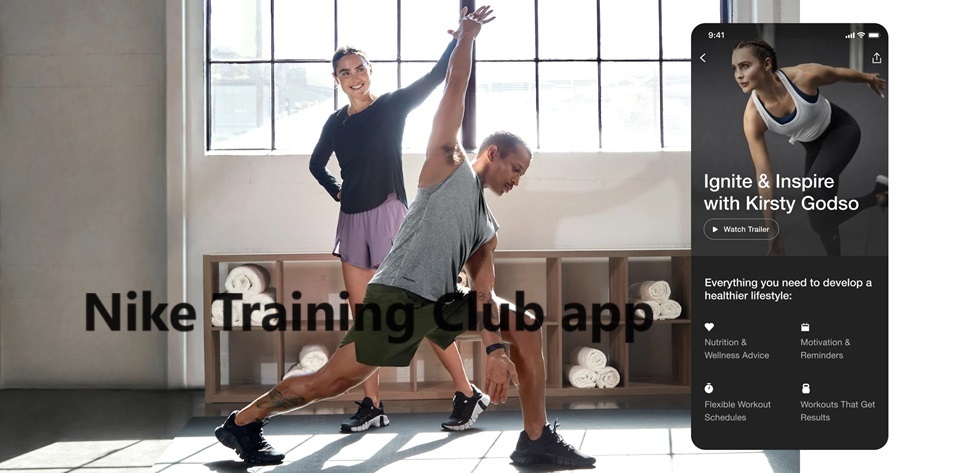Artificial Intelligence (AI) emerges as a powerful ally in the realm of fitness, offering individuals innovative tools to reclaim their health and well-being. The integration of AI in fitness applications brings forth personalized guidance, motivation, and insightful analytics. Whether through wearable devices like Fitbit, which track and analyze physical activity, sleep patterns, and heart rate, or AI-driven fitness apps like Nike Training Club and Freeletics that tailor workout plans based on individual goals, AI is revolutionizing the fitness landscape. These technologies not only adapt to users’ progress but also provide real-time feedback, turning exercise routines into dynamic and personalized experiences. By leveraging AI, individuals can embark on their fitness journeys with tailored support, making the path to well-being more engaging, effective, and attuned to their unique needs.
Here are several ways AI can be used in the context of fitness:
Personalized Fitness Plans:
How: AI algorithms can analyze your fitness level, health data, preferences, and goals to create customized workout plans. These plans may adapt over time based on your progress and feedback. Fitbit, a popular wearable device, uses AI to track users’ physical activity, sleep patterns, and heart rate. The device provides personalized insights and suggestions for achieving fitness goals based on the collected data.
AI-Powered Fitness Apps:
How: Fitness applications enhanced with AI can provide real-time feedback on your exercises, correct your form, and suggest modifications. They may also offer interactive features, such as virtual trainers or virtual fitness classes. The Nike Training Club app employs AI to create personalized workout plans based on users’ fitness levels, goals, and preferences. The app adapts and evolves the training program as users progress.

Wearable Fitness Trackers:
How: Wearables equipped with AI can monitor your physical activity, heart rate, sleep patterns, and more. They provide valuable data that can be analyzed to offer insights into your overall health and fitness levels.
Nutritional Guidance:
How: AI algorithms can analyze dietary preferences, restrictions, and health goals to provide personalized nutritional recommendations. Some apps even offer meal planning and recipe suggestions based on individual needs. MyFitnessPal uses AI to analyze users’ dietary habits and provides nutritional insights. The app helps users track their calorie intake, suggests healthy recipes, and adjusts meal plans based on individual goals.
Virtual Health Assistants:
How: AI-powered virtual assistants can answer fitness-related queries, provide tips, and offer motivation. They may use natural language processing to understand and respond to users’ inquiries about workouts, nutrition, and overall health. Freeletics, a fitness app, uses AI to generate personalized workout plans based on users’ fitness levels, goals, and available time. The app’s virtual coach provides feedback and adjusts the difficulty of exercises.
AI Coaching Platforms:
How: Online platforms powered by AI can act as virtual fitness coaches. They guide users through exercises, monitor progress, and provide continuous motivation through personalized messages or challenges. Freeletics, a fitness app, uses AI to generate personalized workout plans based on users’ fitness levels, goals, and available time. The app’s virtual coach provides feedback and adjusts the difficulty of exercises.

Predictive Analytics for Health Trends:
How: AI can analyze historical health and fitness data to predict trends and potential areas for improvement. This information can be used to proactively adjust workout routines and lifestyle habits. Runtastic, owned by Adidas, incorporates AI features in its running app. The AI coach provides real-time audio feedback during runs, analyzes performance data, and offers personalized training plans.
Gamification and Challenges:
How: AI can be employed to gamify fitness experiences by creating challenges, setting goals, and rewarding achievements. This approach enhances user engagement and motivation. Tempo offers a home fitness studio equipped with AI-driven features. The system uses 3D sensors and computer vision to analyze users’ form during exercises, providing real-time feedback and corrections.
Rehabilitation and Recovery:
How: AI is used in rehabilitation scenarios to create personalized recovery plans for individuals with injuries. It can adapt rehabilitation exercises based on progress and monitor the recovery process. The CAROL bike uses AI to create highly efficient and personalized workouts. It tailors exercise intensity based on the user’s individual fitness level and aims to optimize the benefits of high-intensity interval training (HIIT).
Biometric Monitoring:
How: AI-driven biometric monitoring can track various health metrics, including heart rate variability, stress levels, and respiratory rate. This information helps individuals understand the impact of fitness activities on their overall well-being. Vi Trainer is an AI-powered personal running coach. It analyzes data from wearables, considers users’ fitness levels, and provides real-time audio coaching during runs, adapting to changes in pace and form.
It’s important to note that while AI can be a valuable tool in regaining fitness, it’s advisable to consult with healthcare professionals, fitness trainers, or nutritionists, especially if you have pre-existing health conditions. Combining AI tools with expert guidance can contribute to a holistic and effective approach to improving fitness and well-being.
Have a healthy 2024!


